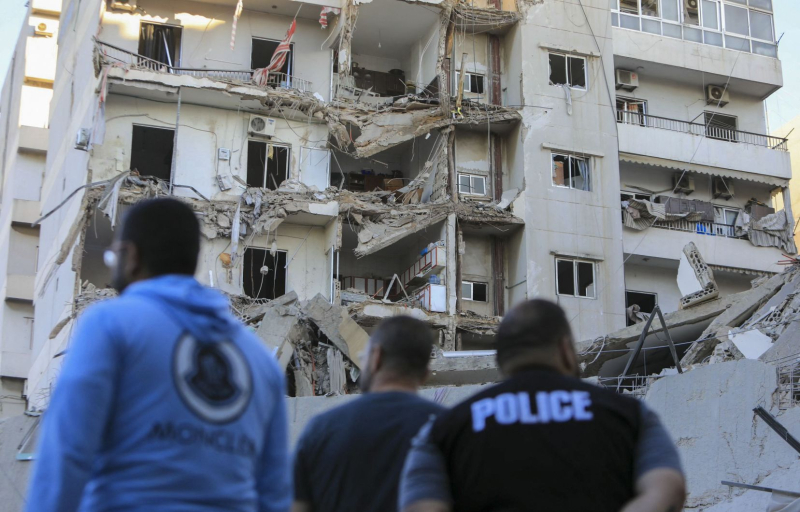
Photo: Agence France-Presse Since the start of the Israeli bombings on September 23, “about 320 buildings have been destroyed in Beirut and its suburbs,” reports Mona Fawaz, an urban planner at the Beirut Urban Lab.
Sarah Benhaida – Agence France-Presse in Beirut
Posted at 8:33
- Middle East
Before, day and night, children played in the street, men and women went to shops and cafes. Today, only young people on motorcycles still drive on the broken roads in the vast southern suburbs of Beirut, a stronghold of the pro-Iranian Hezbollah.
Despite the stench rising from the ruins on street corners, these young people in civilian clothes keep an eye on passers-by and cars, making sure that they are only residents who have come to check on the condition of their apartments or to collect a few belongings.
Distrust reigns. The Israeli bombings that began on September 23 turned into open war with Hezbollah. The all-powerful leader of the Shiite Islamist movement, Hassan Nasrallah, was killed four days later in bombings of unprecedented violence, reducing several buildings to rubble.
Mohammed, 32, 25 of which he spent in the southern suburbs, came back to get clothes. He couldn’t buy it back, as prices had skyrocketed with the economic crisis that has paralyzed the country since 2019.
“Young people told me not to wait too long because drones are constantly flying and could strike at any time,” he told AFP, refusing to give his last name.
Now living with relatives in Beirut, he was determined, despite the danger, to return to the apartment he fled on September 27, the day Nasrallah was killed.
200% Deposit Bonus up to €3,000 180% First Deposit Bonus up to $20,000“Never see my house again”
“We went out without even putting on shoes and we said to ourselves that we would never see our house again,” he says, adding that his neighbors did the same.
His building is still standing. But since the end of September, “about 320 buildings have been destroyed in Beirut and its suburbs,” Mona Fawaz, an urban planner at the Beirut Urban Lab, who has been recording the destruction for decades and is now focusing on those in southern Lebanon and the Gaza Strip (Palestinian territory), told AFP.
This is already more than during the previous war between Israel and Hezbollah in 2006, which lasted 33 days: in an area of about twenty square kilometers, “1,332 buildings were seriously damaged and 281 reduced to craters, forcing 100,000 people to move,” she says.
Here and there, sections of loose asphalt lie, underground pipes have finished discharging drinking water or waste water. Telephone and online communication facilities have been blown up, as have generators that were making up for the failing electricity grid.
More than in 2006, the Israeli air force is “deliberately targeting what allows life to continue,” facilities that “are not Hezbollah infrastructure,” and this “over a larger area,” assures Ms. Fawaz.
While the Haret Hreik neighborhood suffered the brunt of the damage in 2006, Old Bourj el-Barajneh, left intact at that time, is now under fire from bombs.
“We’re afraid”
Today, most of the families—600,000 to 800,000 people, depending on the source—are scattered across Beirut or other parts of Lebanon, with the exception of the east and south, which have been pounded by Israel.
The overwhelming majority are Shiites and survive in schools converted into shelters, rented apartments, or, for some, on the streets.
In Beirut, where these displaced people have arrived, as during the civil war (1975-1990), Hezbollah’s rival parties have brought out their men and flags to mark their territories.
Hassan, 37, grew up in Mreijeh, in the southern suburbs, where the air force has carried out strikes to target Hashem Safieddine, tipped to succeed Hassan Nasrallah.
He remembers “the friendships, the children's games, the smell of morning bread, the neighbors calling out to each other, the Ramadan festivities.”
But today, he says, the supermarket that served as a landmark to show the way to his house lies torn down. He wonders what has become of the internet cafes and football pitches of his adolescence. He has been told that the record store he frequented has disappeared.
Now, he tells AFP, “we are afraid to come back after the war and discover how many of our friends have died, like in 2006.”

